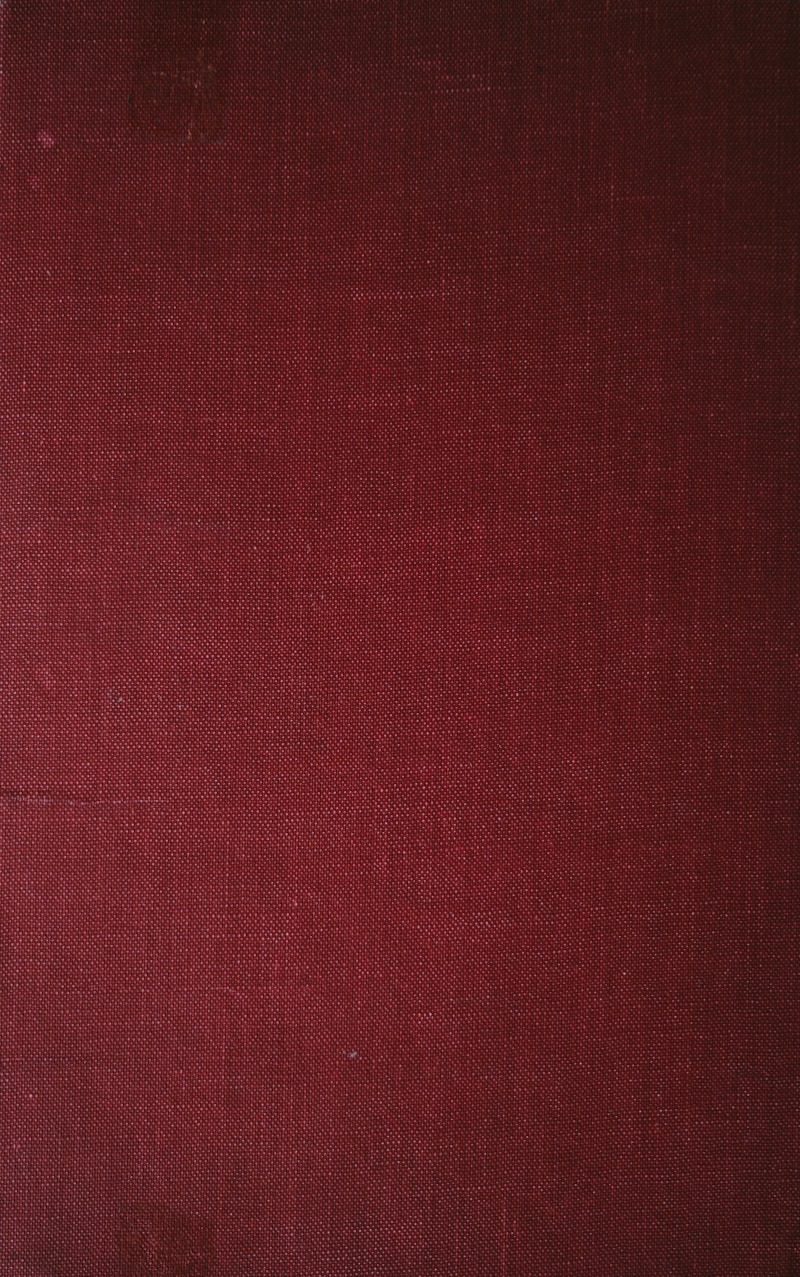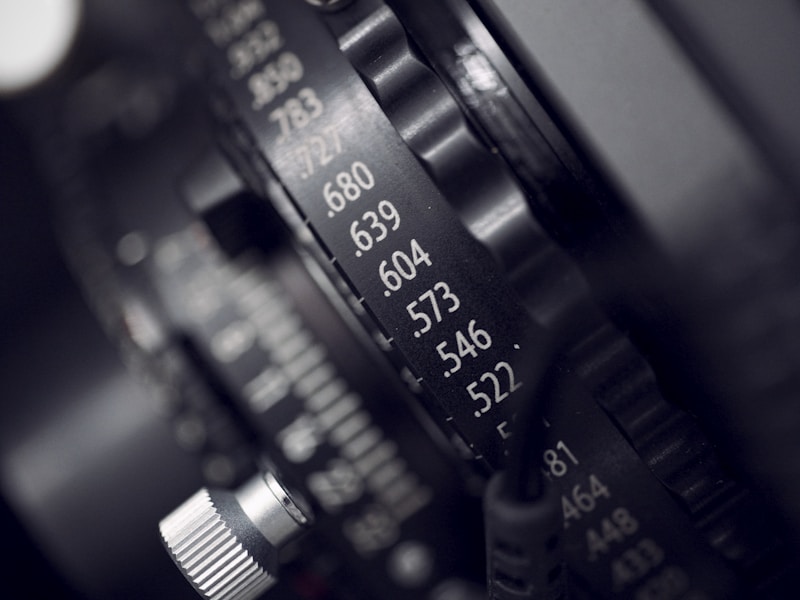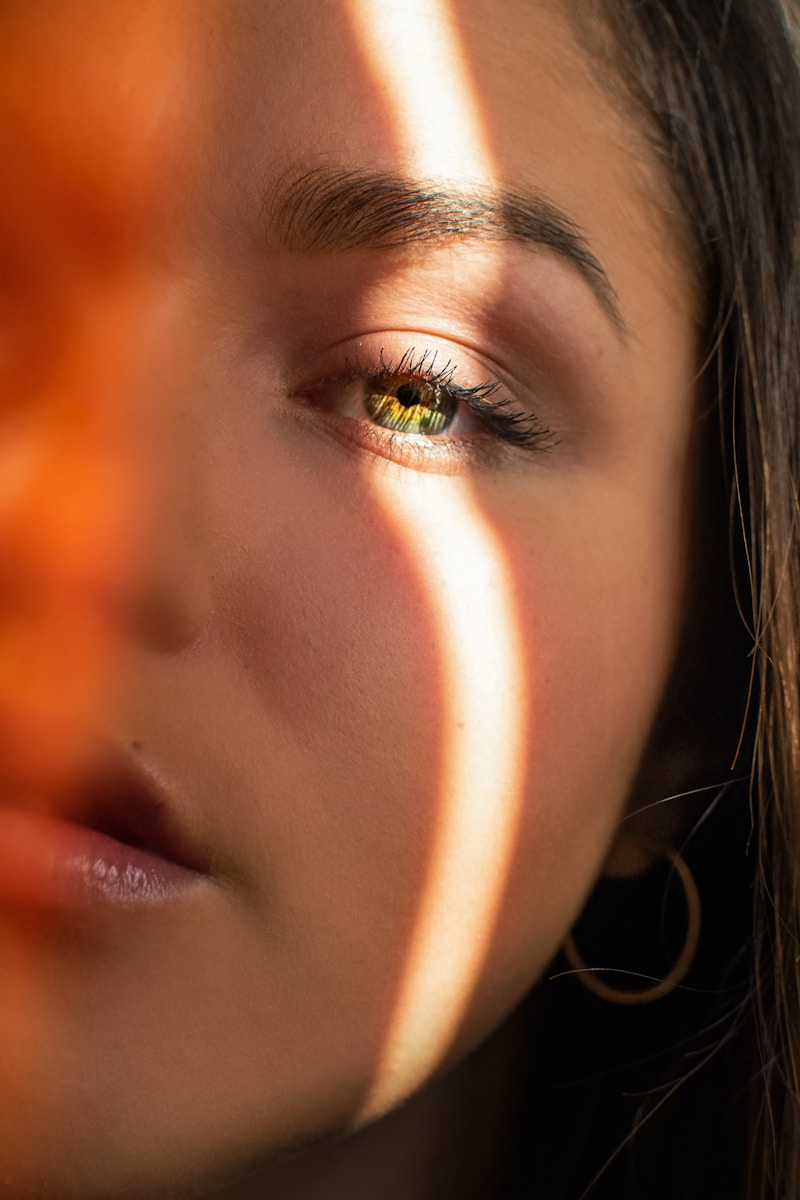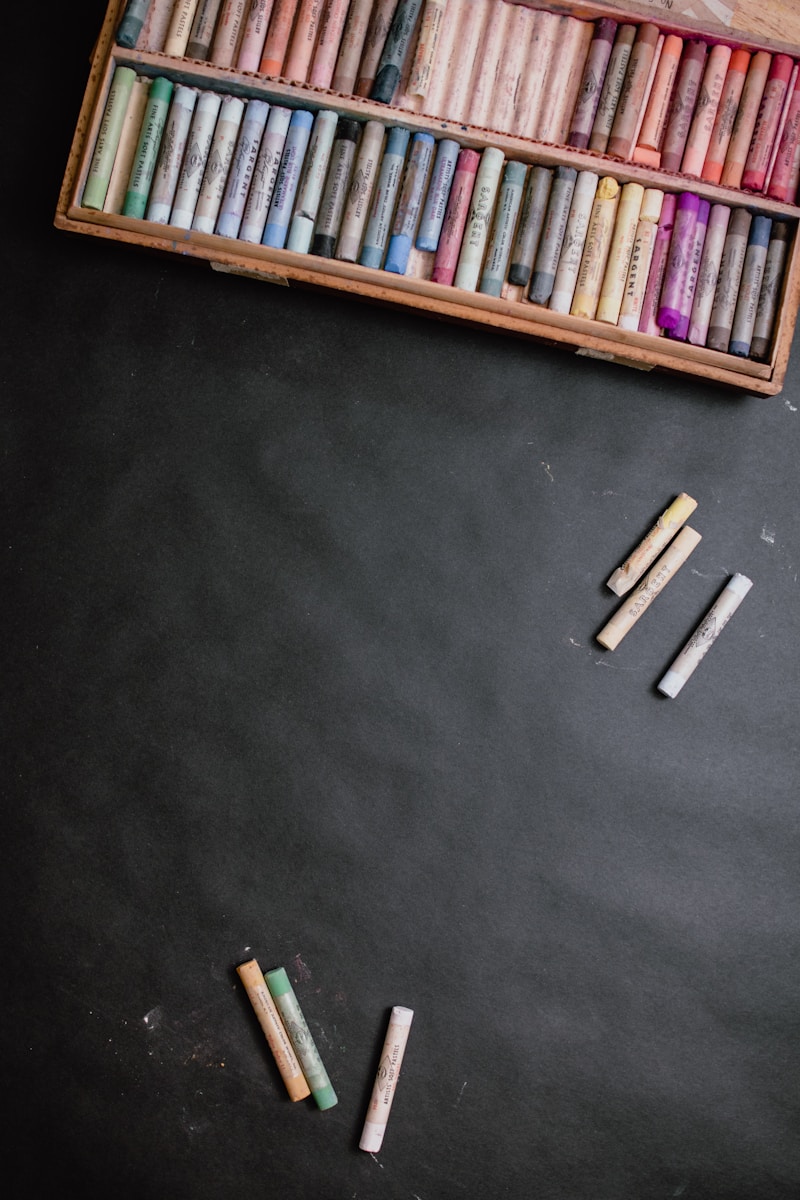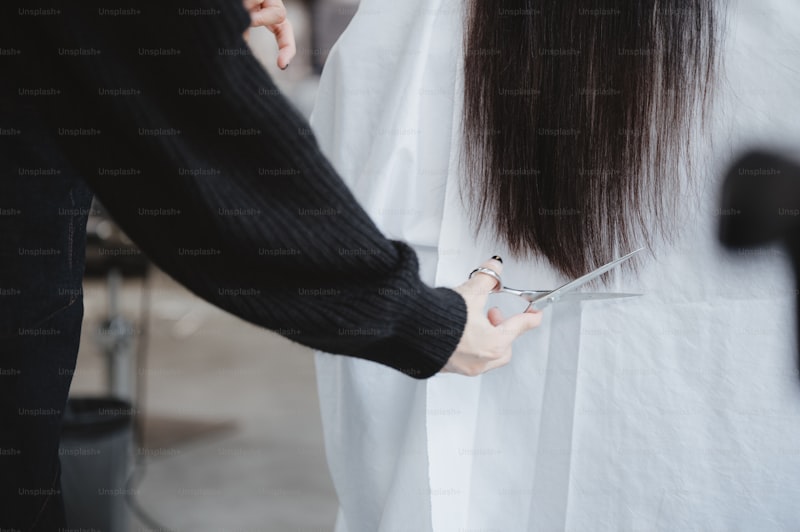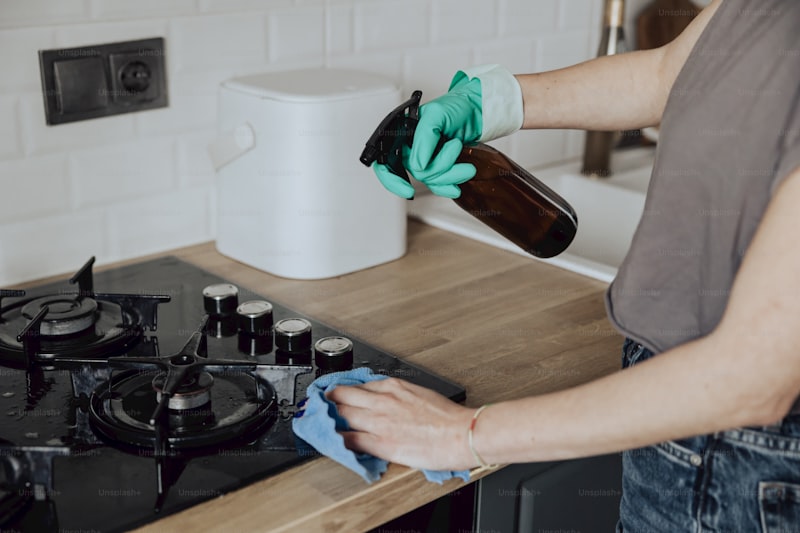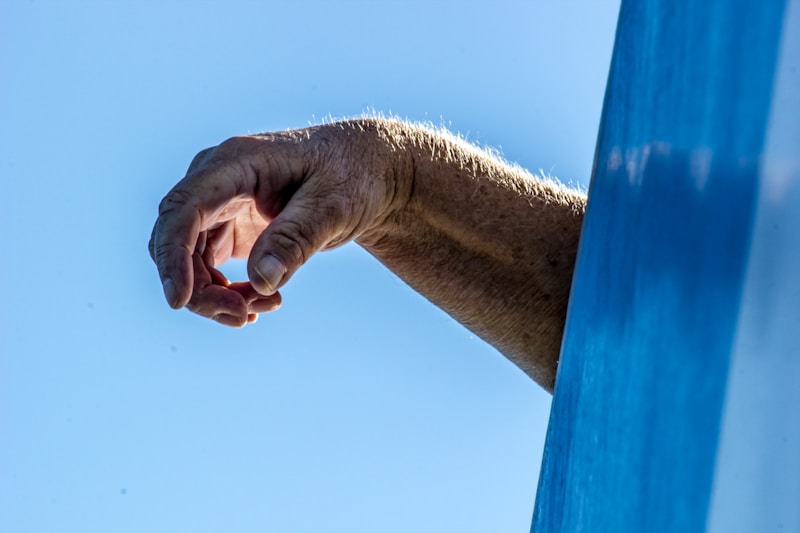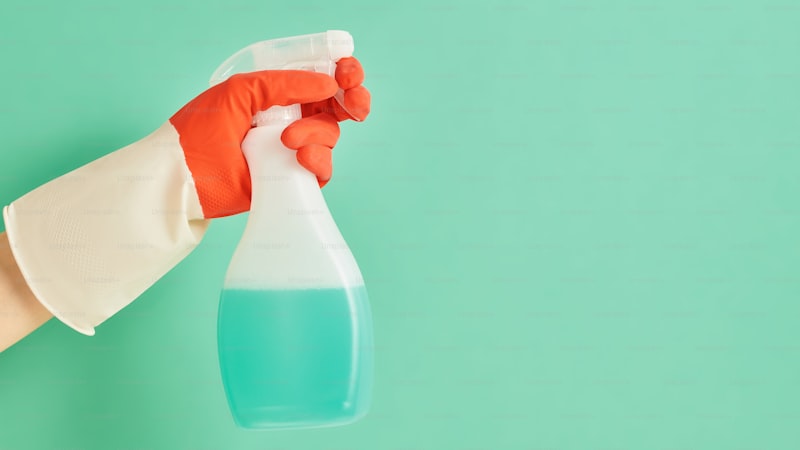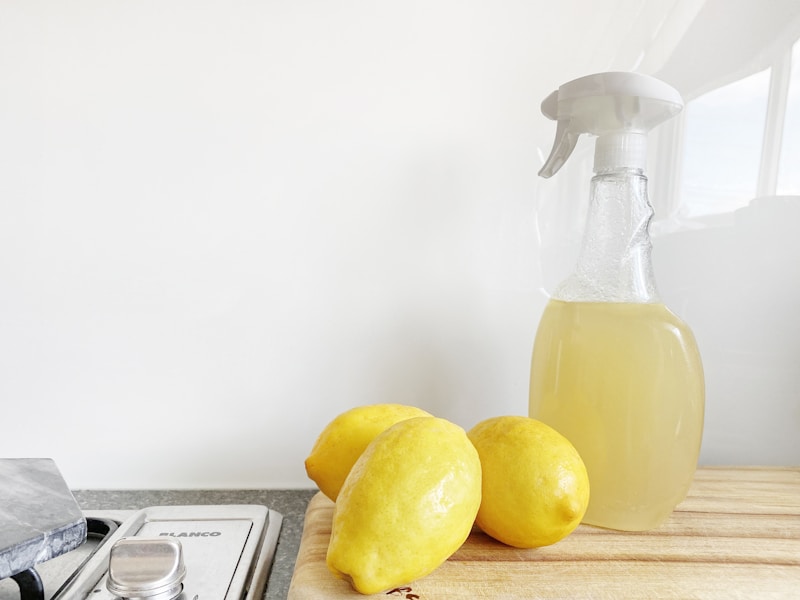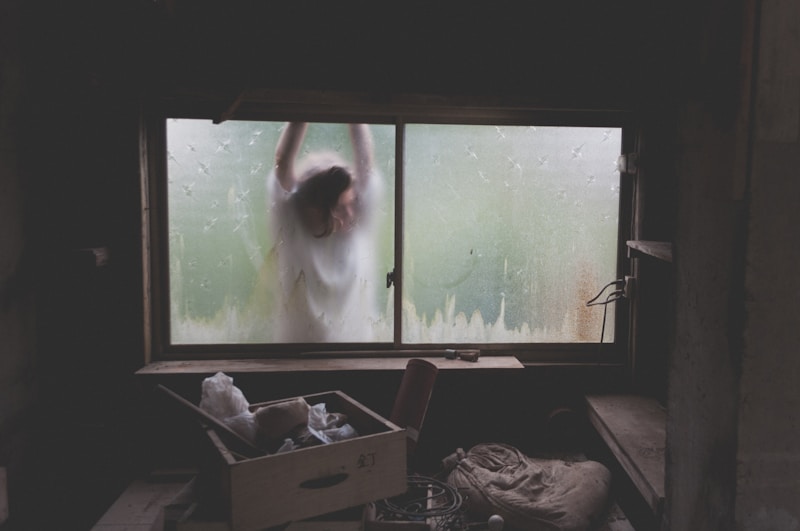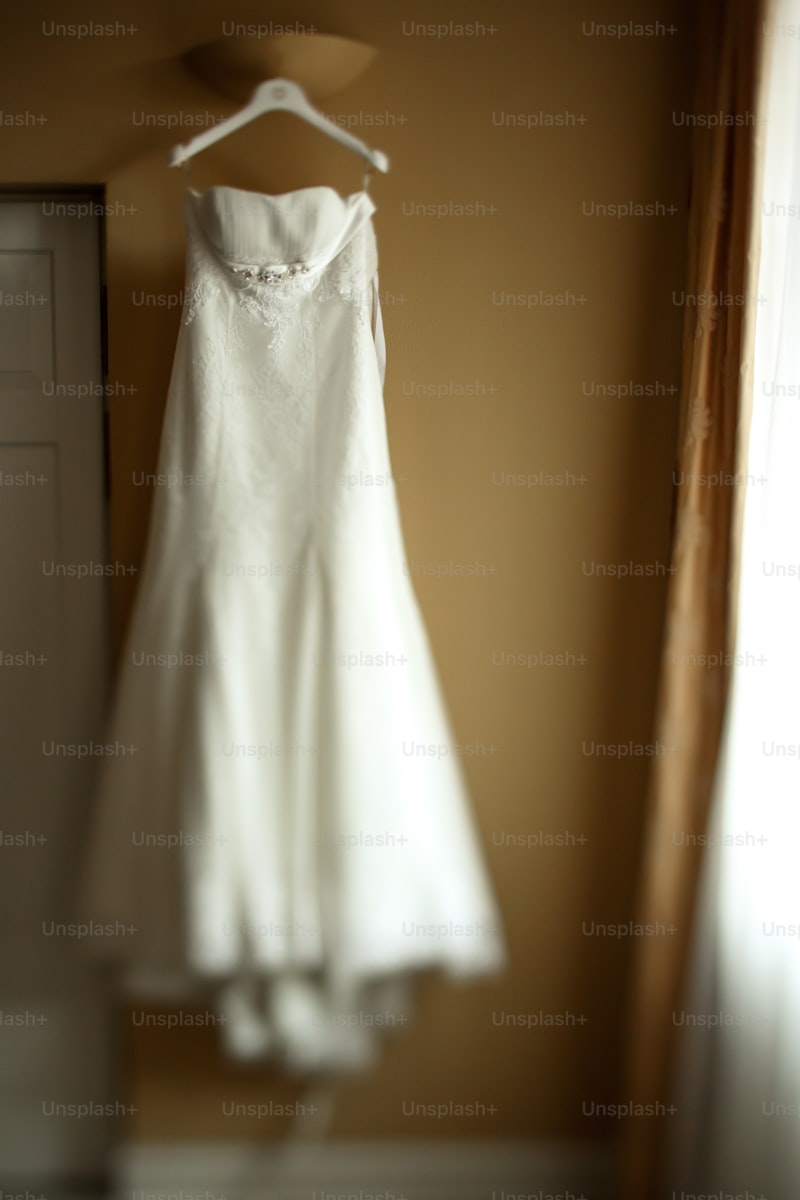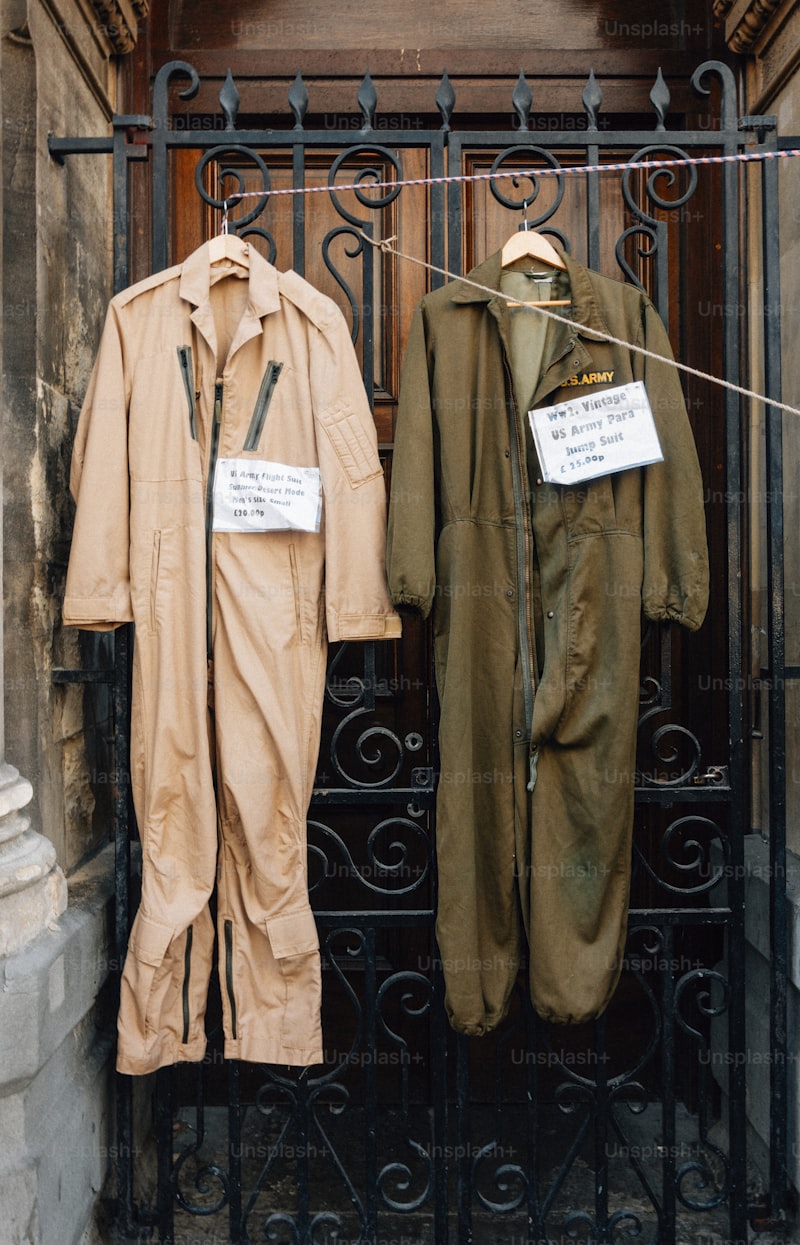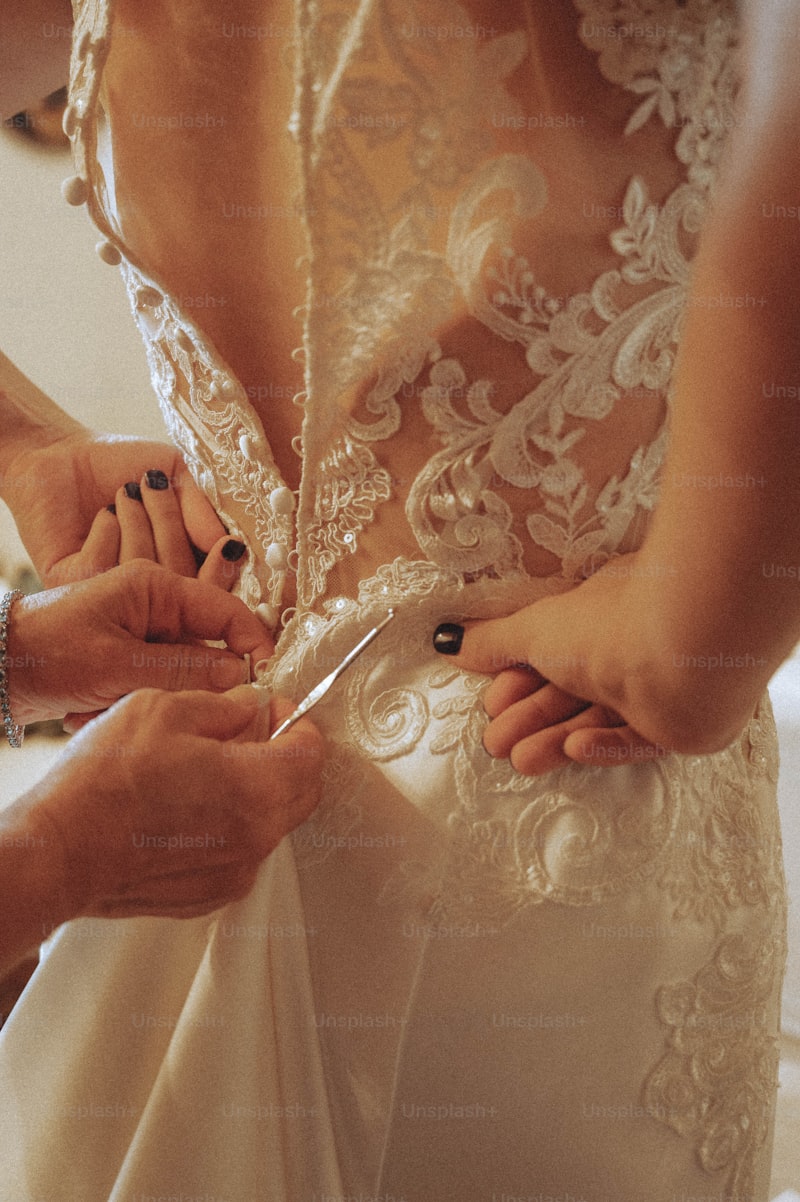Mastering Delicate Fabric Maintenance: Essential Tips and Tricks
When it comes to clothing, some fabrics demand more care than others. Delicate fabrics, such as silk, lace, and chiffon, require a higher level of attention and proper maintenance to ensure their longevity and beauty. Understanding the nuances of delicate fabric maintenance is crucial not only for garment preservation but also for keeping your wardrobe looking chic and stylish. In this comprehensive guide, we will delve into effective methods for maintaining delicate fabrics while answering some common questions related to their care.Understanding Delicate FabricsDelicate fabrics are often characterized by their fine weave, soft texture, and luxurious appearance. Common types of delicate fabrics include:Fabric TypeCharacteristicsCare InstructionsSilkSoft, smooth, and lustrous; sensitive to heat and chemicals.Hand wash or dry clean; use mild detergents.LaceIntricate, airy, and often embroidered; prone to snagging.Hand wash carefully; avoid wringing.ChiffonLightweight and sheer; can be tricky to launder.Gentle cycle in cold water; hang to dry.CashmereSoft, luxurious knit; can pill easily.Hand wash or use a wool cycle; store properly to avoid moths.The Importance of Regular MaintenanceRegular maintenance of delicate fabrics is vital for several reasons:Longevity: Proper care extends the lifespan of your garments.Aesthetics: Clean and well-maintained fabrics look better and maintain their drape and texture.Value: Investing in delicate fabrics requires maintaining their value thr...
Ultimate Guide to Stain Removal Techniques: Expert Tips for Every Stain
Stain Removal Techniques: An Expert's ApproachStains are an inevitable part of life, whether you're enjoying a meal, playing sports, or even just living your daily life. Learning effective stain removal techniques can save you time, money, and worry. This guide will cover a variety of techniques that can help you tackle even the toughest stains, providing you with the knowledge you need to maintain your clothes, upholstery, and more. Let's dive into the world of stain removal.Understanding Different Types of StainsBefore discussing specific stain removal techniques, it's essential to understand the different types of stains. Stains can generally be categorized into two main types: organic and inorganic stains.Type of StainExamplesCommon SourcesOrganicFood, Drinks, Sweat, BloodFruits, Coffee, Red Wine, ChocolateInorganicInk, Paint, RustPermanent Markers, Oil Paint, Corroded MetalEssential Stain Removal TechniquesNow that we understand the types of stains, let's explore some effective stain removal techniques for tackling them successfully.1. General Stain Removal TipsRegardless of the stain type, here are some general tips that can be applied:Always act quickly. The longer a stain sits, the harder it becomes to remove.Test any stain removal solutions in an inconspicuous area first to ensure they don’t cause damage.Blot, don’t rub. Rubbing can spread the stain and damage the fabric.Use cold water for protein stains (like blood) and hot water for oily stains.2. Specific Stain Re...
Gentle Wash Methods: Revolutionizing Your Skincare Routine
Embracing Gentle Wash Methods for Glowing SkinIn today’s fast-paced world, the importance of maintaining a healthy skincare routine cannot be overstated. With so many products and techniques available, many people are turning towards gentle wash methods to keep their skin fresh, clean, and radiant. This article will delve into various gentle wash methods, their benefits, and tips to incorporate these techniques into your daily life.What Are Gentle Wash Methods?Gentle wash methods involve using milder cleaning techniques that are less likely to irritate the skin. Unlike harsh exfoliables and acid-based cleansers, gentle methods prioritize skin health, focusing on maintaining the skin's natural barrier while effectively removing impurities. This section will explore several types of gentle wash methods.Types of Gentle Wash Methods Gentle Cleansing Creams Cream-based cleansers are designed to soften your skin while removing dirt and makeup without stripping natural oils. Micellar Water A water-based cleaning solution that attracts dirt without the need for scrubbing, making it ideal for sensitive skin. Oil Cleansers Oil-based cleansers dissolve makeup and grime, providing a nourishing wash that hydrates the skin while cleansing. Hydrating Gel Cleansers These lightweight cleansers help retain moisture while lifting away impurities, perfect for daily use. Washcloth Method Using a soft washcloth with your ...
Preserving Intricate Details: A Guide to Mastering Precision in Arts and Crafts
IntroductionIn the world of arts and crafts, preserving intricate details is not merely a choice but an essential skill that can significantly enhance your creations. Whether you are a painter, sculptor, or craftsman, understanding how to maintain the delicate elements of your work will lead to better overall quality and increased appreciation from your audience. In this article, we will explore various techniques, tools, and tips that can help you in the quest for perfection.The Importance of Preserving Intricate DetailsIntricate details are what set a masterpiece apart from ordinary work. They capture the viewer’s attention, evoke emotions, and tell a story. Here are some reasons why preserving intricate details matters: Aesthetic Appeal: Intricate details add beauty and sophistication to your work. Artistic Expression: They allow you to convey your thoughts and feelings more effectively. Market Value: Art pieces with intricate details often command higher prices.Common Challenges in Preserving Intricate DetailsWhile it is vital to preserve intricate details, various challenges can hinder your efforts: Time Constraints: Rushing through your work can lead to overlooked details. Tool Limitations: Using unsuitable tools may damage or distort intricate features. Experience Level: Beginners may find it difficult to execute precise movements.Techniques for Preserving Intricate DetailsHere are some effective techniques you can implement to enhance your ability to...
Complete Guide to Professional Gown Care: Keep Your Elegance Fresh
IntroductionIn a world where first impressions matter, maintaining the pristine condition of your gowns is essential. Whether it’s for a wedding, a gala, or a special event, gowns often represent a significant investment and hold sentimental value. This guide will delve into the intricacies of professional gown care, ensuring that your stunning ensembles remain as beautiful as the day you wore them.Why Professional Gown Care is EssentialProfessional gown care goes beyond simple cleaning; it encompasses a comprehensive approach to preserving the integrity and beauty of your attire. Here are a few reasons why investing in professional gown care is crucial: Preservation of Material: Gowns are often made from delicate fabrics such as chiffon, silk, and lace. Professional care ensures the materials are treated appropriately. Stain Removal: Stains, especially from food and drink, can be difficult to remove without damaging the fabric. Professionals have the expertise to treat stains effectively. Alterations and Repairs: Beyond cleaning, professional services can provide alterations and necessary repairs to ensure a perfect fit, extending the life of your gown.Understanding Gown FabricsTo ensure effective care, it’s essential to understand the different types of fabrics commonly used in gowns. Here are some examples:Fabric TypeCare InstructionsSilkDry clean only, avoid direct sunlightChiffonHand wash or dry clean, hang to dryLaceGentle hand wash or dry clean onlyTaffetaDry ...
Timely Cleaning Advice: Your Go-To Guide for a Spotless Home
Introduction to Timely Cleaning AdviceKeeping your home clean can often feel like a daunting task, especially with the countless tips and tricks available online. However, with the right timely cleaning advice, you can easily maintain a spotless environment without feeling overwhelmed. In this guide, we'll explore essential cleaning tips, schedules, and methods that can make your cleaning experience not just efficient, but also enjoyable!Why Timely Cleaning Is CrucialTimely cleaning doesn't just contribute to a visually appealing home; it also promotes health and safety. Dust, allergens, and bacteria can accumulate over time, potentially causing health issues. Thus, following a cleaning schedule can help minimize these risks. Whether you are a busy professional or a stay-at-home parent, scheduling cleaning tasks can save you time and stress.Common Cleaning Myths DebunkedBefore diving into actionable tips, let’s address some common cleaning myths that often lead to ineffective strategies: Myth 1: Cleaning products need to be harsh to be effective. Myth 2: It's acceptable to skip vacuuming if you have hardwood floors. Myth 3: Dusting is just about aesthetics.Effective Cleaning StrategiesTo get the most out of your cleaning efforts, consider these proven strategies:1. Establish a Cleaning RoutineDayTaskMondayBathroom CleaningTuesdayDust Living AreasWednesdayKitchens - Surfaces and AppliancesThursdayFloors - Vacuum and MopFridayBedrooms - Linens and DustingSaturdayOutdoo...
Mastering the Art of Post-Wedding Preservation: A Complete Guide
Introduction to Post-Wedding PreservationAfter the whirlwind of your wedding day comes a vital phase: post-wedding preservation. This process ensures your cherished memories are kept safe and sound, allowing you to relive the joy of your big day for years to come. From bridal gowns to photographs, every element from your wedding deserves care and attention. In this article, we will delve deep into the various aspects of post-wedding preservation, providing you with actionable tips and insights.What is Post-Wedding Preservation?Post-wedding preservation involves the practices and techniques used to maintain and protect all elements of your wedding day. This includes everything from storage techniques for your wedding dress to preserving your bouquet and photographs. The goal is to keep these items in pristine condition, allowing them to evoke the same emotions and memories as they did on your special day.The Importance of Post-Wedding PreservationPreserving your wedding memories serves several essential purposes: Emotional Connection: By keeping your wedding artifacts intact, you sustain the emotional value tied to your special day. Legacy Creation: Preserved items can be passed down to future generations, becoming a part of your family’s legacy. Investment Protection: High-quality wedding items, such as dresses, can hold significant monetary value and should be preserved accordingly.Key Elements of Post-Wedding PreservationThere are several key elements to consider w...
A Comprehensive Guide to Avoiding Harsh Chemicals in Your Daily Life
Understanding the Importance of Avoiding Harsh ChemicalsIn today’s world, where pollution and toxins are rampant, avoiding harsh chemicals has become a crucial aspect of maintaining a healthy lifestyle. From personal care products to household cleaners, many items we use daily contain harmful substances that can negatively impact our health and the environment. This article will delve into what harsh chemicals are, the risks associated with them, and practical steps you can take to minimize exposure.What are Harsh Chemicals?Harsh chemicals are substances that can potentially cause harm to human health and the environment. They are commonly found in various products, including:Household cleanersPersonal grooming productsFood additivesIndustrial productsExamples of harsh chemicals include phthalates, parabens, formaldehyde, and ammonia. Prolonged exposure can lead to serious health issues, such as respiratory problems, skin irritations, and even chronic diseases.Why You Should Avoid Harsh ChemicalsThe consequences of using products that contain harsh chemicals are concerning. Here are some critical reasons to prioritize natural and chemical-free products:Health Risks: Long-term exposure to harsh chemicals has been linked to various health issues, including cancers, hormone disruptions, and developmental problems in children.Environmental Impact: Many chemicals pollute our water systems, harm wildlife, and contribute to climate change.Sensitive Populations: Children, pregnant wo...
Ultimate Guide to Color Fading Prevention: Keep Your Colors Vibrant
In a world where colors play an integral role in aesthetics and branding, color fading is a challenge that many face. This phenomenon not only affects clothes but also artwork, car paint, and even home décor. Understanding color fading prevention is crucial for anyone looking to maintain the vibrancy of their items. In this article, we'll delve into various aspects of color fading, the importance of prevention, effective strategies, and expert tips. Let’s explore how to keep your colors looking fresh for years to come!Understanding Color FadingColor fading occurs when the pigments in materials break down or degrade, resulting in dull or washed-out appearances. Several factors contribute to this process. Here are some significant culprits:FactorDescriptionSunlight ExposureUV rays can bleach colors, especially in textiles and artwork.Environmental ConditionsHumidity, temperature fluctuations, and air pollutants can accelerate fading.Chemical ReactionsSubstances in cleaning agents may cause discoloration through chemical reactions.Washing TechniqueImproper washing methods can lead to premature fading of fabrics.Understanding these factors enables you to take preventative measures to protect your valuable items from fading.The Importance of Color Fading PreventionPreventing color fading is essential for several reasons:Aesthetic Appeal: Vibrant colors enhance the visual appeal of your belongings, from clothes to décor.Value Retention: For art collectors and car enthusiasts, maint...
Discover the Incredible Benefits of Steam Cleaning for Your Home
Understanding the Upsides of Steam CleaningWhen it comes to keeping our homes sparkling clean, many of us are looking for methods that are effective, eco-friendly, and safe for our families. One such method that has gained immense popularity in recent years is steam cleaning. In this article, we will explore the numerous Steam cleaning benefits, providing you with all the information you need to consider this impressive cleaning technique.What is Steam Cleaning?Steam cleaning involves the use of high-temperature steam to clean and sanitize surfaces. This method is not only efficient but also chemical-free, making it an appealing option for those who are conscious about using harmful substances in their homes. Steam cleaners work by converting water into steam, which is then applied to various surfaces to break down dirt, grime, and bacteria. One of the main advantages of steam cleaning is its effectiveness on a variety of materials, including tile, carpets, upholstery, and even kitchen appliances.The Health Benefits of Steam CleaningOne of the primary benefits of steam cleaning lies in its ability to enhance the health of your living environment. Below are some key health benefits: Elimination of Allergens: Steam cleaning effectively kills dust mites, mold spores, and pet dander, providing relief for allergy sufferers. Sterilization: The high temperatures of steam can eliminate up to 99.9% of bacteria and viruses, promoting a safer home for you and your family. Reduc...
Essential Hand Wash Recommendations for Optimal Hygiene
Introduction to Hand Wash RecommendationsIn today's world, maintaining proper hygiene has become more crucial than ever. One of the most effective ways to prevent the spread of germs and infections is through washing hands properly. This article will explore essential hand wash recommendations that everyone should follow, including tips for selecting the right soap, the best washing techniques, and common misconceptions about hand hygiene. By the end of this article, you will be equipped with the knowledge to maintain effective hand hygiene.The Importance of Hand WashingHand washing is a simple yet powerful practice that can significantly reduce the risk of illness. According to the World Health Organization (WHO), hand washing with soap can decrease the incidence of respiratory infections by 16% and diarrheal diseases by 23%. These statistics underscore the importance of proper hand hygiene, particularly in preventing the spread of contagious diseases.Choosing the Right SoapSelecting the right hand soap is paramount to effective hand washing. Here are some hand wash recommendations:Type of SoapKey FeaturesBest UseAntibacterial SoapContains ingredients that kill bacteria.Recommended in healthcare settings.Foaming SoapProduces foam with less product, making it economical.Good for general use.Liquid SoapConvenient and easy to use.Ideal for home or office.Bar SoapDurable and often cheaper.Great for households with multiple users.Proper Hand Washing TechniquesEven the best soap w...
Eco-Friendly Cleaning Solutions: A Sustainable Choice for a Cleaner Future
Introduction to Eco-Friendly Cleaning SolutionsIn today’s world, sustainability is more than just a buzzword; it's an essential standpoint for consumers. With increasing awareness of environmental issues, people are turning to eco-friendly cleaning solutions to maintain cleanliness in their homes and workplaces. These solutions not only help in keeping our surroundings clean but also minimize the impact on the planet. In this article, we will explore various aspects of eco-friendly cleaning solutions, their benefits, how they compare to conventional cleaners, and tips for making your own cleaning products at home.What Are Eco-Friendly Cleaning Solutions?Eco-friendly cleaning solutions are products made from natural ingredients that are not harmful to the environment. Unlike traditional cleaning products that often contain harsh chemicals, eco-friendly alternatives derive their cleaning power from biodegradable substances. This means they break down easily and do not contribute to pollution or harm aquatic life when disposed of.The Benefits of Using Eco-Friendly Cleaning SolutionsBenefitDescriptionHealthier HomesEco-friendly cleaners are free from toxic chemicals, reducing the risk of respiratory issues and skin irritations for you and your family.Environmental ProtectionUsing biodegradable cleaning products helps protect water sources from contamination and reduces our carbon footprint.Averseness to AllergiesThey are less likely to trigger allergies or sensitivities since the...
Effective Spot Cleaning Strategies for a Pristine Home
Understanding Spot Cleaning: What You Need to KnowSpot cleaning is an essential home maintenance strategy that can keep your living space looking fresh and tidy without the need for deep cleaning every time. This article delves into various spot cleaning strategies that can help you tackle spills and stains quickly and efficiently.What is Spot Cleaning?Spot cleaning refers to the practice of removing specific stains or spills from surfaces rather than conducting a full clean of the entire area. This targeted approach conserves time and effort while ensuring that your home remains pristine. Whether it's a quick carpet mishap or a food stain on your favorite sofa, effective spot cleaning can make all the difference.The Importance of Spot CleaningImplementing proper spot cleaning techniques can prevent permanent damage to your furniture, carpets, and upholstery. It helps in maintaining a hygienic environment by removing food particles and potential allergens. Moreover, regular spot cleaning can extend the life of your furniture and other home accessories.Common Spot Cleaning StrategiesHere are some practical spot cleaning strategies that can be integrated into your routine:StrategyTools NeededStepsBlottingPaper towels, clothGently blot the stain, avoiding rubbing.Homemade CleanersWhite vinegar, baking soda, dish soapCreate a solution, apply to the stain, and blot.Commercial Stain RemoversSpot cleaner, brushApply as per the product instructions.Steam CleaningSteam cleanerUse stea...
Essential Considerations for Choosing Dry Cleaning Services
When it comes to maintaining the integrity of your garments, understanding dry cleaning considerations is vital. Many individuals find themselves asking questions about when to dry clean their clothes, which fabrics are suitable, and how to choose the right dry cleaning service. This comprehensive guide will delve into the essential aspects of dry cleaning, equipping you to make informed decisions about your wardrobe care.Why Choose Dry Cleaning?Dry cleaning is a process that uses chemical solvents to clean clothes, a method that is particularly beneficial for certain fabrics and stains. Here are some reasons why dry cleaning can be a preferable choice: Fabric Care: Delicate fabrics such as silk, wool, and leather often require dry cleaning to avoid damage and preserve their quality. Stain Removal: Dry cleaning is effective in removing oil-based stains, which water-based processes may struggle with. Shape Retention: Dry cleaning helps maintain the structure and form of tailored clothing. Key Dry Cleaning ConsiderationsWhen contemplating dry cleaning, keep the following considerations in mind:1. Fabric TypesNot all fabrics are suitable for dry cleaning. Common materials that can be dry cleaned include: Wool Silk Cashmere Polyester RayonConversely, fabrics like cotton, linen, and some blends may be laundered in water. Always check the care label for guidance.2. Stain TypesUnderstanding the types of stains that can be removed through dry cleaning is cruci...
Essential Long-term Storage Tips: Keep Your Belongings Safe and Sound
Effective long-term storage is crucial for preserving not just your belongings but also your peace of mind. Whether you're transitioning between homes, storing seasonal items, or just looking to declutter, having a solid plan is key. In this article, we will delve into essential long-term storage tips, covering various aspects of the process that will keep your items safe, organized, and easy to access. Let’s explore what you need to know to ensure your materials remain in excellent condition.Understanding the Importance of Long-term StorageLong-term storage refers to the process of storing items for an extended period, typically ranging from several months to years. This can involve personal items, furniture, documents, and even vehicles. Understanding why you need effective storage strategies is the first step to success.Prevents Damage: Poor storage can lead to dust buildup, moisture damage, and pests.Maximizes Space: Organizing your items into a storage solution can free up space in your home.Easy Access: Properly packed items are easier to locate when needed.Choosing the Right Storage FacilityThe first consideration in your long-term storage strategy is to choose the right facility. Here are some critical points to consider:Climate Control: If you’re storing sensitive items such as electronics, artwork, or documents, look for a climate-controlled unit.Security Features: Ensure the facility has robust security measures like surveillance cameras and gated access.Accessibil...
Mastering Odor Elimination Techniques: A Comprehensive Guide
Understanding Odor Elimination TechniquesUnpleasant odors can disrupt our daily lives, whether at home, in the workspace, or even in our vehicles. Effective odor elimination techniques not only improve our environments but also contribute to better health and well-being. This article dives into various odor elimination methods, tips, and tricks that can help you regain control over your space.The Science of Odor ControlBefore delving into specific odor elimination techniques, it's essential to understand the science behind odors themselves. Odors are caused by volatile organic compounds (VOCs) that evaporate into the air. These compounds can originate from various sources, including food, pets, mold, and household products. An effective odor elimination strategy targets the source of these odors, neutralizing them and preventing their return.Common Sources of Odors Source of Odor Potential Solutions Kitchen waste Regular disposal, odor-absorbing bags Pets Regular grooming, specialized cleaners Mold Proper ventilation, moisture control Stale air Air purifiers, frequent airing out Effective Odor Elimination Techniques1. VentilationOne of the simplest yet most effective odor elimination techniques is improving ventilation. Opening windows and doors allows fresh air to circulate, helping to dilute and remove stale or unpleasant smells. Consider using exhaust fans in kitchens and bathrooms to further enhance air quality.2. Natural A...
Everything You Need to Know About the Restoration of Bridal Gowns
The restoration of bridal gowns is a significant undertaking that many brides and families may consider after the wedding day. Whether due to wear and tear, storage damages, or simply wanting to preserve the beautiful memories associated with the gown, understanding the process is key to ensuring your bridal attire stays as pristine as the day you wore it. In this article, we’ll explore various aspects of bridal gown restoration, the benefits it offers, and how to choose a reliable service.Why Consider Restoration of Bridal Gowns?Bridal gowns are often one of the most cherished possessions a bride can own. They symbolize love, commitment, and beautiful memories. Here are a few reasons why restoration of bridal gowns should be on your radar: Preservation: Many families pass down wedding dresses through generations. Restoration can help keep the gown in excellent condition for future brides. Emotional Value: Reviving the gown can reawaken joyous memories and create a lasting connection to the special day. Aesthetic Appeal: A beautifully restored gown can look brand new, allowing new brides to wear it or showcasing it during an anniversary celebration.Common Issues Requiring RestorationOver time, bridal gowns can encounter various issues, including: Issue Explanation Stains Wine, food, or makeup stains can mar the beauty of your gown. Tears and Rips Fabric can weaken and become damaged, requiring expert repai...
Essential Maintenance Tips for Different Fabrics: A Guide to Keeping Your Wardrobe Fresh
Understanding Fabric Care: Importance of Maintenance for Different FabricsMaintaining the integrity and appearance of your clothing requires an understanding of the different types of fabrics and the care they need. This guide will delve into the essential maintenance techniques for various fabrics, ensuring your favorite pieces remain in top condition. The Different Types of FabricsFabrics can be broadly categorized into natural and synthetic materials. Each category includes various types of fabrics that require specific care methods. Below are some common fabric types and their maintenance requirements:Fabric TypeCare InstructionsCottonMachine washable, tumble dry low, may be ironed on medium heat.WoolHand wash or dry clean only, lay flat to dry, avoid heat.Synthetic (Polyester, Nylon)Machine washable in cold water, gentle cycle, tumble dry on low.LinenHand wash or machine wash on a gentle cycle, iron while damp.SilkDry clean recommended, can be hand washed in cold water, air dry.Importance of Proper MaintenanceProper maintenance of fabrics not only enhances their appearance but significantly extends their longevity. Neglecting to care for your garments can lead to irreversible damage, fading, pilling, and even shrinkage. Here, we outline the maintenance requirements for various popular fabrics.Cotton MaintenanceCotton is known for its durability and comfort, making it a popular choice for everyday wear. While it is machine washable, care should be taken with water tempera...
Mastering the Art of Handling Embellishments Carefully
Understanding Embellishments in Art and DesignEmbellishments are decorative elements that enhance the aesthetic appeal of various forms of art and design, from fashion to home decor. Understanding how to handle these embellishments carefully is crucial for artists, designers, and enthusiasts alike. This article delves into the nuances of managing embellishments effectively, offering tips, techniques, and insights into their proper application.The Importance of EmbellishmentsEmbellishments serve not just as decorative features but also as critical elements that can transform a simple piece into a work of art. When applied judiciously, they can increase the value and appeal of a project. However, improper use can lead to a chaotic appearance that detracts from the overall design.What Are Embellishments?Embellishments can take various forms, including but not limited to: Beads Sequins Laces Ribbons Fabrics PaintsEach type has its unique characteristics, and understanding these is essential when planning to incorporate them into your designs.Taking the Right Approach to Handling EmbellishmentsWhen dealing with embellishments, particularly in fashion design, the approach must be methodical and thoughtful. Here are some strategies on how to handle embellishments carefully: Strategy Description 1. Planning the Design Before starting, sketch out your design to see where embellishments will fit best. 2. Choose Quality Materials Opt for high-quality ...
Ultimate Guide to Your Bridal Gown Inspection Checklist
Bridal Gown Inspection Checklist: Ensuring Your Perfect DayYour wedding day is one of the most important days of your life, and your bridal gown is undoubtedly one of the most significant elements of that day. Ensuring that your gown is in pristine condition before walking down the aisle is crucial. This article provides a comprehensive bridal gown inspection checklist to help you ensure that your dress looks perfect on your special day.Why a Bridal Gown Inspection Checklist is EssentialWedding preparations can be overwhelming, and a bridal gown inspection checklist can streamline the process. Here are a few reasons why it's essential: Peace of Mind: Checking every detail of your gown ensures that you won’t have any last-minute surprises. Focus on the Details: Your wedding gown requires careful attention to detail. A checklist helps you remember every aspect that needs to be verified. Time Management: With a well-structured checklist, you can allocate your time effectively, ensuring all aspects of your gown are ready before the wedding day.The Ultimate Bridal Gown Inspection ChecklistBelow is a detailed checklist that you can use when inspecting your bridal gown. Feel free to print it or save it on your mobile device to have it handy during your preparation.Checklist ItemStatusFabric ConditionIs the fabric free from stains, tears, or snags?Seams and StitchingAre all seams secure? Check for any loose threads.Length and FitDoes the gown fit properly? Is the length corr...
